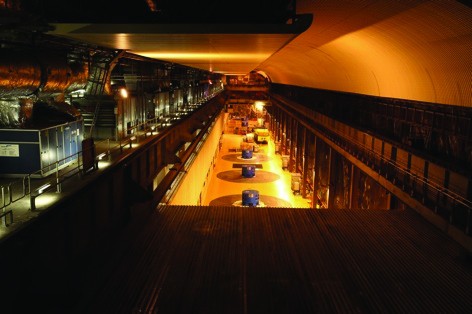Occupying my usual quiet corner at the Royal Academy of Engineering for the latest in its series of innovation seminars — this time on energy — I was heartened by the presence on the programme of some representatives of the often neglected and overlooked part of the energy mix, namely storage.
It’s a bit of a mystery why we hear so little about energy storage as it’s an absolutely vital part of the ongoing task of decarbonising energy. In a world where energy is harder to come by, owing to depletion of hydrocarbons or an unwillingness to burn them, it becomes ever more important to be able to store energy which isn’t being used at any given moment, in whatever form of energy you store it — chemical, electricity, motion or heat.

Energy storage is one of the Technology Strategy Board’s targets for funding in emerging energy systems, but as yet we’ve seen no large scale trials of grid-connected energy storage. And this isn’t because technologies don’t exist. There are several, ranging from container-sized batteries using lithium-ion and other chemistries, able to store about a megawatt-hour, to Highview Power’s cryogenic system which uses momentarily-unneeded generating capacity to liquefy air, which can then be vapourised and expanded through a gas turbine to regenerate the electricity when it’s needed. Another intriguing possibility raised at the RAEng meeting is to use the same unneeded capacity to electrolyse water and store the resulting hydrogen in the UK’s existing natural gas grid; hydrogen and methane mix very well, and the addition of hydrogen in moderate amounts does not affect methane’s combustion characteristics. Adding biogas methane as well would, explained Graham Cooley, CEO of ITM Power, go some way towards decarbonising heating, which is responsible for some 40 per cent of CO2 emissions and a significant quantity of natural gas consumption in the UK.
’Wind and waves are certainly intermittent, but that intermittency is extremely localised
Energy storage is, of course, most often connected with the growth in renewable generation. This, the thinking goes, is so intermittent that it can’t work at all without some method to store electricity gluts so that they can be shunted onto the grid when there’s no wind, or it clouds over, the sea is calm or the tide is slack. This isn’t actually true. Wind and waves are certainly intermittent, but that intermittency is extremely localised: if it isn’t windy at one windfarm site, there’s a very high chance that nearby ones will have good wind characteristics; similarly, the latest generations of photovoltaics still generate in cloudy conditions. Moreover, wind, wave and solar tend to complement each other, if deployed as an array; if it’s windy, the waves will be high a little later; and sunny weather tends to occur in calmer conditions. Despite this, it is true that storage, possibly organised on a regional basis, is needed. Another possibility is to use pumped hydroelectric storage: Norway is already developing a business storing Germany’s excess electricity in its fjords, and if no new pumped-storage systems could be built in the UK (it’s highly geography-dependent, and most of the suitable landscape in Britain is protected) could also take advantage of this.
However it’s done, it must be a priority to establish storage as part of the British energy landscape as soon as possible. It will not only help prepare us for the future energy landscape, it will help calm those sceptics who doubt the practicality of low-carbon energy generation.




Red Bull makes hydrogen fuel cell play with AVL
Surely EVs are the best solution for motor sports and for weight / performance dispense with the battery altogether by introducing paired conductors...